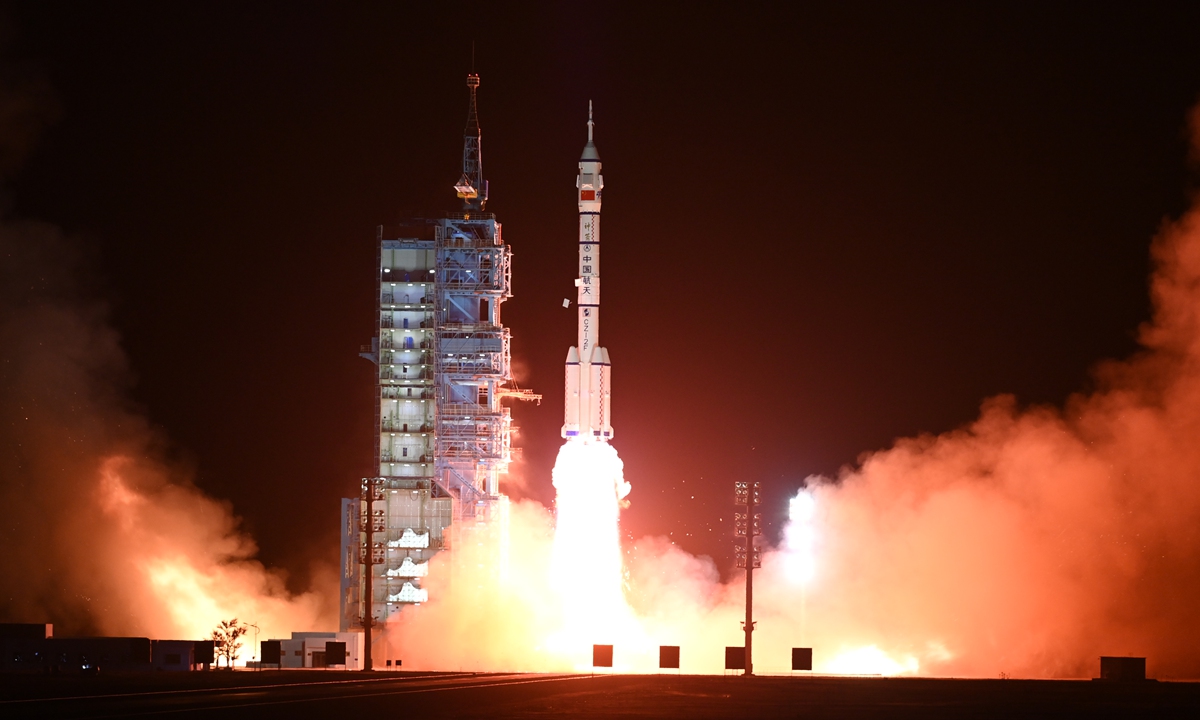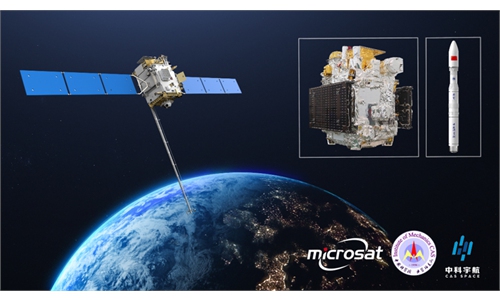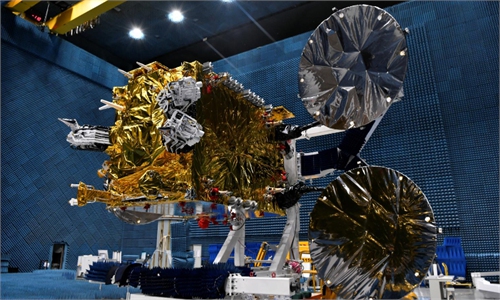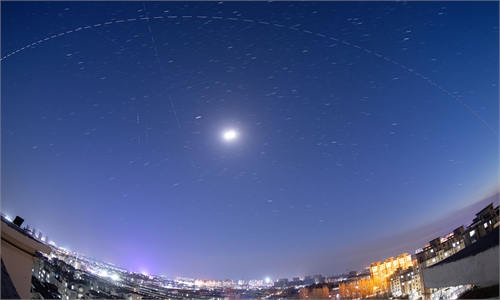China space keeps upbeat momentum, eyeing nearly 70 orbital launches in 2023: CASC blue paper

The Long March 2F Y-15 rocket, carrying the Shenzhou-15 spacecraft with three taikonauts aboard, blasted off from the Jiuquan Satellite Launch Center in northwest China on Tuesday. Photo: Wang Jiangbo
China's state-owned aerospace giant China Aerospace Science and Technology Corporation (CASC) issued its annual blue paper on Wednesday, revealing nearly 70 launches to send 200 spacecraft into space this year, compared with the current record of more than 50 in 2022.
The Global Times learned at the release event that the China Space Station, having completed the in-orbit construction and assembly stage, has entered the application and development stage and started normal operations after completing in-orbit construction and assembly. This year China will launch one cargo spacecraft, two manned spacecraft and two subsequent crew return missions.
In the domain of deep-space exploration, the CASC will move forward the Phase 4 lunar probe missions and asteroid exploration projects, and carry out the research and development of the Chang'e-7 and Tianwen-2 spacecraft.
The China National Space Administration (CNSA) said that China will launch the Queqiao-2 relay satellite, which will provide data communication relay services for the following Chang'e-6, -7 and -8 missions.
Wang Qiong, a deputy chief designer of the Chang'e-6 mission, disclosed that as a back-up of the Chang'e-5 probe, the Chang'e-6 will attempt to carry out a lunar sample return mission from the far side of the moon in 2024 or 2025.
"Chang'e-6 is set to visit the dark side of the moon, and discover and collect lunar samples from different regions and of different ages. The probe mission is to realize technical breakthroughs such as orbital design and control, intelligent sample collecting and lift-off technology on the far side of the moon, as well as realizing an automatic sample return mission. In the meantime, effective international collaboration will be carried out,." Wang said.
Hu Hao, the chief designer of the Chang'e-6 mission, said that Queqiao-2 will be launched by the beginning of 2024.
The basic structure of the International Lunar Research Station (ILRS) will be built by around 2028, so it will be possible for Chinese astronauts to land on the moon within 10 years, according to China's lunar exploration chief designer Wu Weiren.
The ILRS will expand from a basic structure that China's Phase-4 lunar probe mission aims to build by using the lunar probes of Chang'e-6, -7 and -8, Wu told the media in November 2022.
Yu Tianyi, a deputy director of the scientific research planning office of the Beijing Aerospace Flight Control Center, told the Global Times that although he has not communicated with the Russian team over the building of the ILRS, exchanges have been carried out at various levels.
Since the Chang'e-4 mission, when the Chinese probe successfully made the first landing on the far side of the moon, China has been representing the world. Yu wished that scientists and astronomers from all over the world could join China and explore the universe together.
The maiden flight of the Long March-6C carrier rocket is also expected in 2023, improving the spectrum for China's Long March rocket family. The cumulative number of launches in this series will exceed 500 in 2023, the CASC blue paper said.
"China has fully established itself as a major space-faring nation and entered the ranks of the world's space powers. Over the past five years, both China and the US have seen rapid growth in launch activities, with the number of launches alternately leading and the quality of spacecraft continuing to climb, becoming the main drivers of world space growth," it noted.
In 2022, China carried out 64 orbital launches, leading the world and sending 188 spacecraft into space which ranked No.2 second place in the world in terms of total mass at 197.21 tons, reaching a record high.
Among these, 53 launches were delivered by the Long March carrier rockets, meaning that there were 128 consecutive successes for the rocket series.
In 2022, China developed its aerospace application capability, benefiting all walks of life. For example, China has established the capability of remote sensing and monitoring over all its maritime territory, with the help of Chinese maritime satellites.
China has also elevated monitoring over Huangyan Island, the Diaoyu Islands, Xisha, Zhongsha and Nansha Iislands, and waters nearbysurrounding all these islands, providing data support for comprehensive management and use of these waters and regions.



